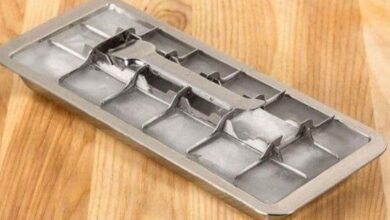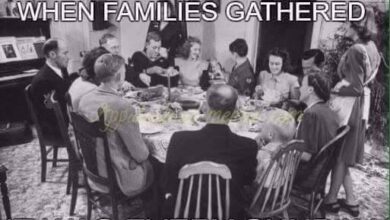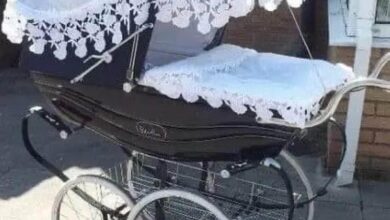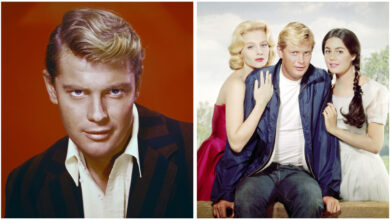Streets Looked Like THIS in the 50s – You Won’t Believe How Things Have Changed!
Streets in the 1950s hold a special place in the hearts of many, especially for those who experienced the simpler, slower pace of life back then. The bustling scenes of local businesses, family-owned shops, and rows of classic cars lined up along the roads are memories that have stood the test of time. The image of vibrant towns and cities filled with gleaming cars from brands like Ford and Chevrolet, all parked neatly under string lights and holiday decorations, is enough to transport anyone back to the golden age of American life.

Back in the 1950s, driving was a luxury and a symbol of freedom. Owning a car meant more than just transportation—it was a lifestyle. The streets were filled with beautiful chrome-covered vehicles, often with fins on the back and two-tone paint jobs that made every car look unique. Whether it was a Sunday afternoon drive or a quick stop by the local soda shop, cars played a major role in the social lives of families during that era.
Not only were the streets filled with iconic cars, but they were also home to small, family-owned businesses that formed the backbone of local communities. Diners, bakeries, hardware stores, and mom-and-pop shops were where people gathered and shared their day-to-day lives. These establishments often had bright neon signs and window displays that invited people in, creating a warm, welcoming atmosphere that is harder to find today.
Holiday celebrations in the 1950s were another staple of life back then. The streets would be decked out in festive decorations, from wreaths to string lights, making every main street feel like something out of a movie. It was a time when the community truly came together, with parades, local events, and everyone pitching in to decorate and spread holiday cheer. It was a magical time, when streets felt alive, and everyone was a part of something bigger.
Fast forward to today, and it’s clear that the world has changed significantly. Many of the quaint businesses from the 1950s have been replaced by large chain stores and malls. Where once there were thriving local economies with familiar faces, there are now big-box retailers dominating the landscape. It’s not uncommon for many small towns to have lost their unique charm as a result of modern-day commercialism.
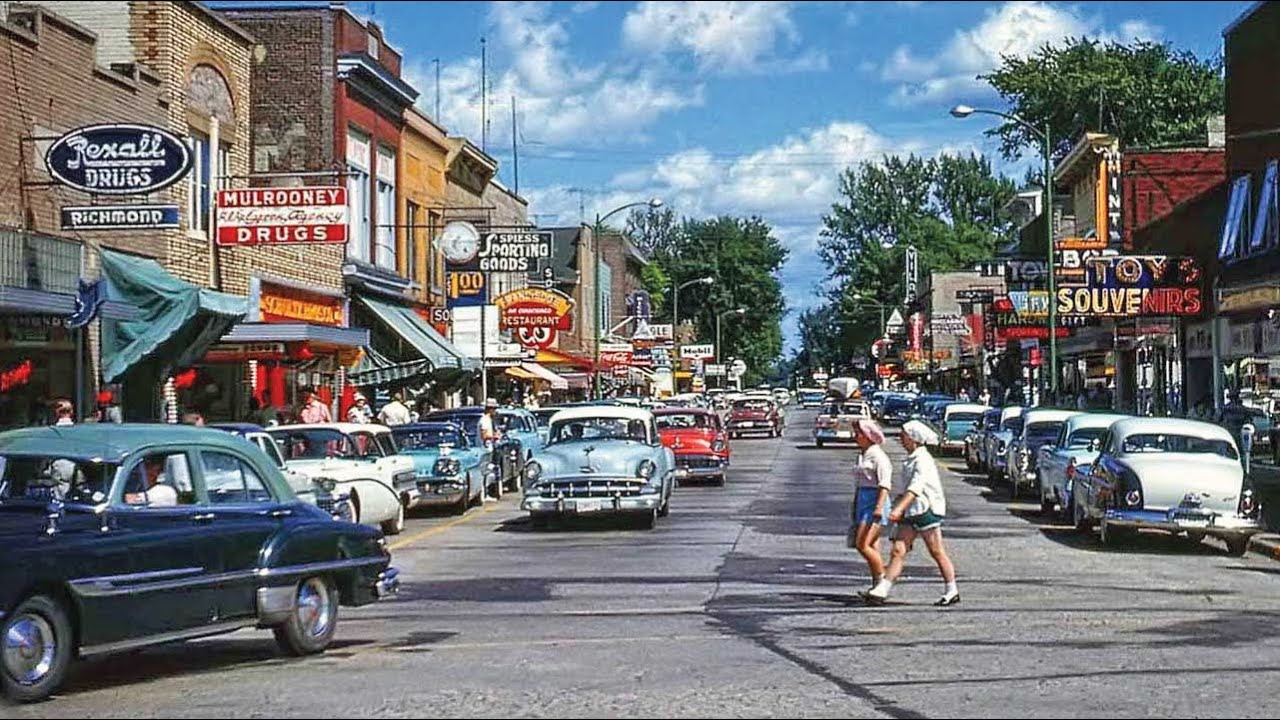
The streets themselves have evolved, too. Cars, once symbols of personality and flair, now blend together in a sea of mass-produced vehicles. The individuality that came with owning a car in the 1950s has largely disappeared, with today’s cars focused on efficiency and function. The bold colors and chrome accents of the past have been replaced by sleek, minimalist designs that prioritize aerodynamics and fuel efficiency.
The sense of community has also changed drastically. Back in the 50s, people would often know their neighbors and shop owners by name. People greeted each other on the street and took pride in the town they lived in. Today, with the rise of technology and online shopping, there is less interaction in physical spaces. Many people now opt to stay connected through screens rather than face-to-face conversations in their local neighborhoods.
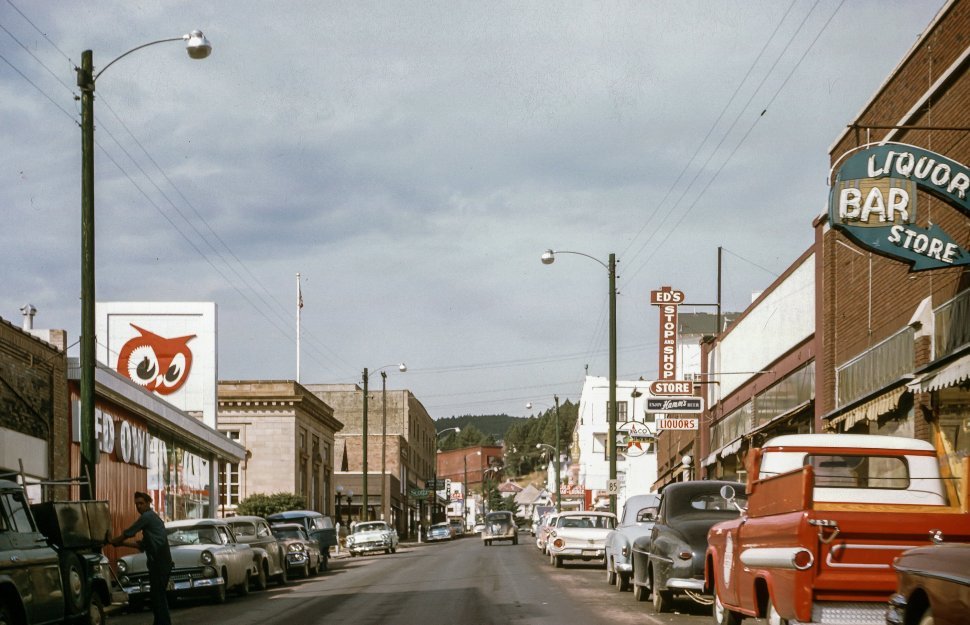
Despite these changes, there is still a yearning for the charm and simplicity of the 1950s. Nostalgia plays a powerful role in reminding people of a time when things seemed easier, and life wasn’t so fast-paced. Images like the one of 1950s streets transport us back to a world where connection was tangible, and the pace of life was slower, giving us more time to appreciate the little things.
While we can’t turn back time, it’s important to remember and celebrate the history that shaped the streets of the past. The 1950s were a unique moment in history when communities thrived, and the streets felt alive with possibility. For many, this time remains a symbol of the “good old days,” a period they wish could last forever.
As we look to the future, there’s still something to be said about holding onto the values and simplicity that made the 1950s so special. Perhaps, by remembering the past, we can bring some of that charm back into our modern lives, even if just in small ways.
